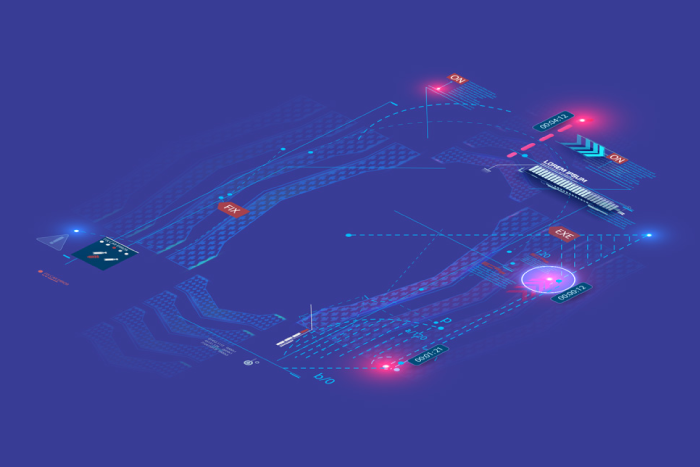Everybody is talking about hybrid quantum systems. Yet there aren’t a lot of well defined definitions of what a hybrid system actually is, what it does, and the value it brings.
That’s probably because different folks have different definitions and visions of what hybrid quantum systems can do. After all, we are in the midst of the birth of quantum innovation, where there is so much opportunity yet also a lot of unknowns. For now.
Let’s take a look at some of those definitions.
Hybrid Systems for Hybrid Computer Vendors
For scientists and quantum engineers focused on building quantum computers, hybrid quantum systems are heterogeneous physical systems that are combined and coordinated with software to deliver more accurate and diverse results quickly.
In this arena, hybrid quantum systems, composed of different physical components with complementary functionalities, are being explored to provide multitasking capabilities. A central goal of the envisaged quantum technologies is to develop devices that can simultaneously perform several of these tasks, namely, reliably store, process, and transmit quantum information.
Physical properties make some components of these systems better suited than others for specific tasks. Photons are well suited for transmitting quantum information, weakly interacting spins can serve as long-lived quantum memories, and superconducting elements can rapidly process information encoded in their quantum states.
To vendors, hybrid quantum systems refer to the actual internal workings of the quantum computer itself.
But enterprises have a different interpretation. This is also how we interpret the current go-to-market for hybrid quantum computing.
Hybrid Quantum Systems for Production Computing
If you’re an enterprise or large organization, hybrid quantum computing has a different meaning.
In this world, hybrid refers to using quantum and classical computers together to solve complex problems, simulate complicated situations, model extremely large information and generally provide better insights and information to our ever increasingly complex business decisions.
There are different opinions of how to best use hybrid computers in the production world.
There is agreement on the overall goal: use quantum computers to enhance or augment the processing power of today’s classical systems. Meaning, get more accurate results, faster and with more options than with a classical system alone.
There are different ways to think about how to deliver this type of hybrid quantum computing.
3 Examples of Hybrid Quantum Computing for Production
Simultaneous processing.Some view hybrids as being able to process the same exact problem and data with both quantum and classical computers. Results are compared and then used in subsequent processing to improve the computations on both systems until we reach the best possible set of results.
In this case, you’d take a traveling salesman problem and run it on a classical and a quantum computer (when quantum computers can scale to that level.)
Results from both would be compared and the best results used to re-seed the next round of processing.This iteration continues until you find the best possible result. The drawback of this approach is that it requires a quantum computer large enough to process the entire problem.
Quantum-Directed classical. You can also use a quantum computer to direct how and what a classical processor does.
For example, quantum computers are really good at finding the most likely data ranges for results within extremely large data or solution sets. Classical systems are really good at finding the results, but they get bogged down in the volumes of data variables and can’t process the entire data set.
Working together, quantum systems can find where the most likely areas are for accurate best results. They can then direct the classical systems to search for solutions within those data ranges. Classical systems solve the problem easily as they quickly find the most accurate results thanks to the direction.
Quantum-Augmenting classical. Now think about the data sets in your optimization or simulation problems. In some areas, the data is sparse, meaning the tables aren’t completely filled in so you have a lot of empty fields that don’t need to be actually processed. Other areas are “dense,”meaning most of the fields in your tables contain a piece of data.
Quantum computers can process dense datasets very efficiently. Classical computers get bogged down in that same dense data and often can’t perform. Yet classical systems can process sparse data quite well.
By using quantum computers to augment the processing of dense data while classical systems process sparse data, you augment the classical processing to get faster, more accurate and complete results in cases where the data has overwhelmed classical systems in the past.
The Quantum-Augmented and Quantum-Directed approaches both have the advantage that they can deliver benefits from QPUs that are too small to contain the entire problem. The disadvantage is they require much more sophisticated software to analyze and prepare the problem for processing on the hybrid system.
These are just three options. The potential benefits of using hybrid quantum systems is enormous … we simply need to think out of the classical box.
The Bottom Line
The definitions of hybrid systems will continue to diverge. That’s expected.
We’re in the infancy of a powerful new technology innovation. The more we learn, the more we will advance and adapt our initial expectations.
Regardless of your definition, hybrid quantum computing architectures will be the first production use of quantum processors to deliver value for solving real-world problems.


